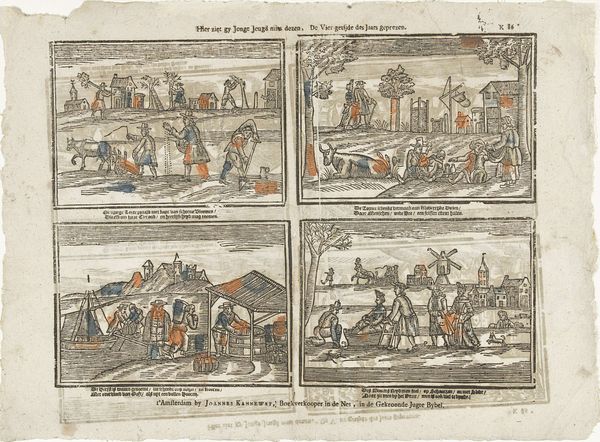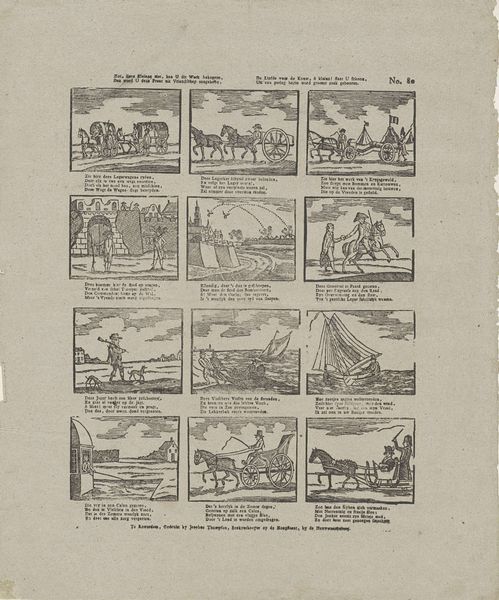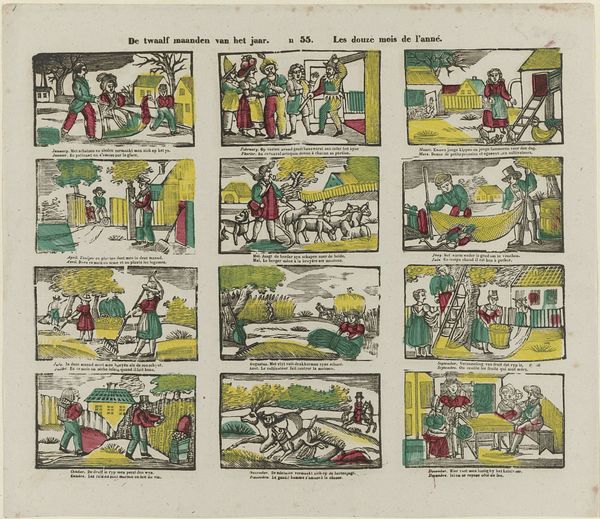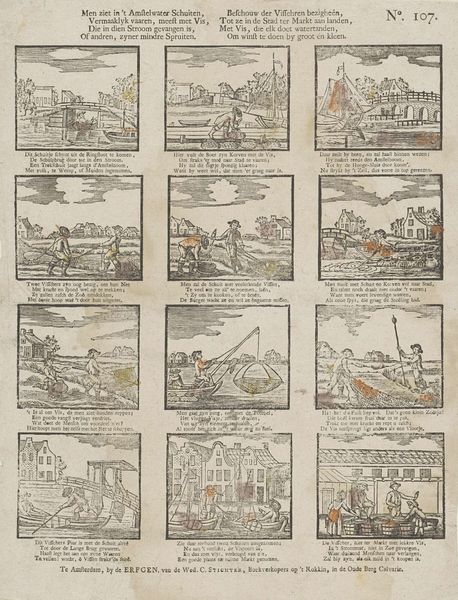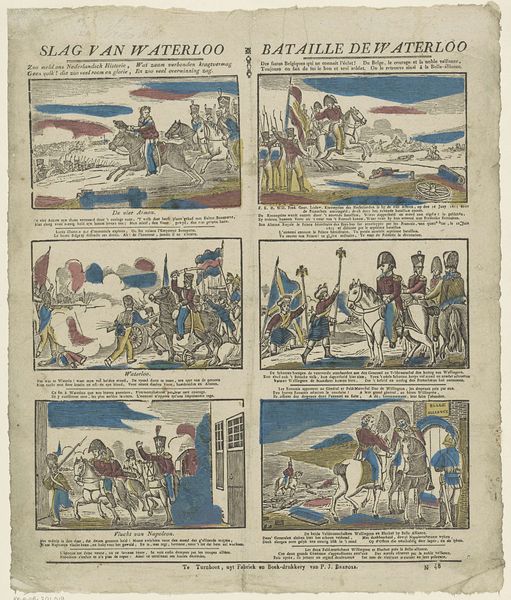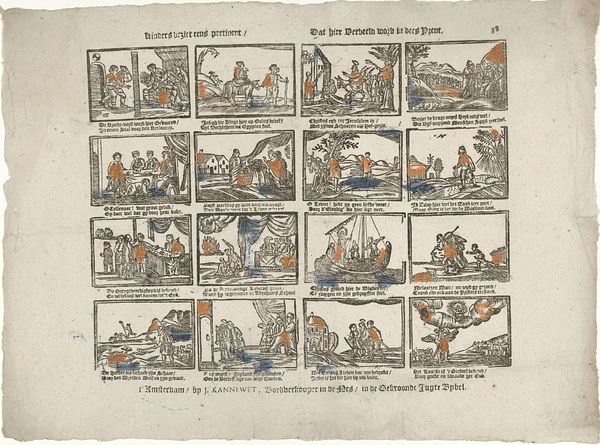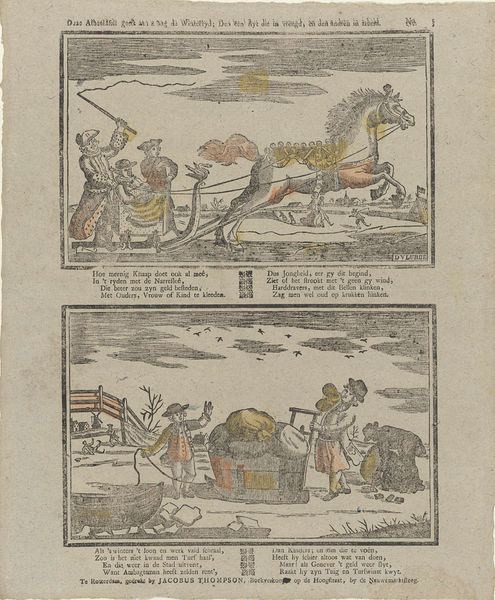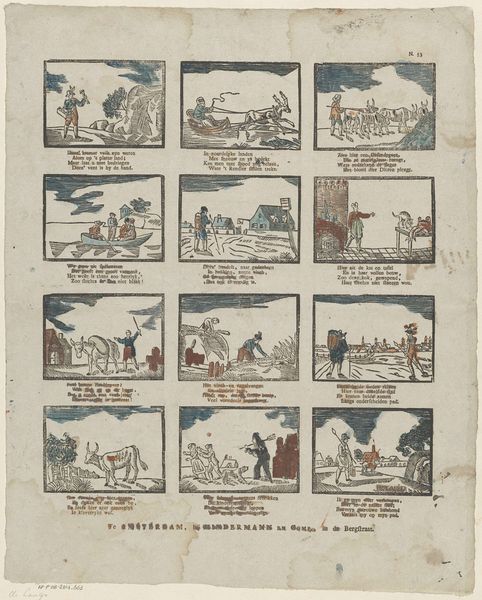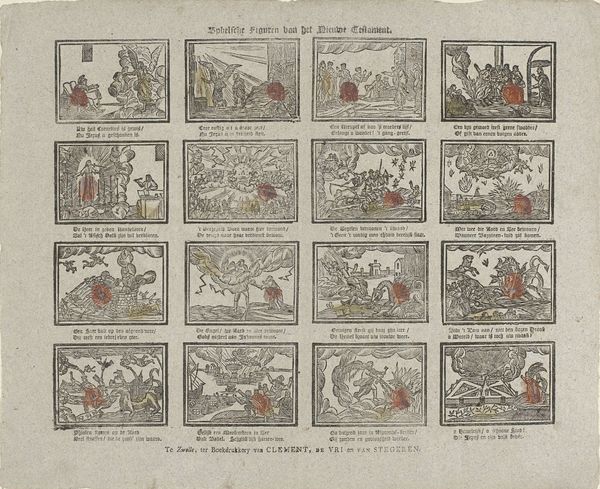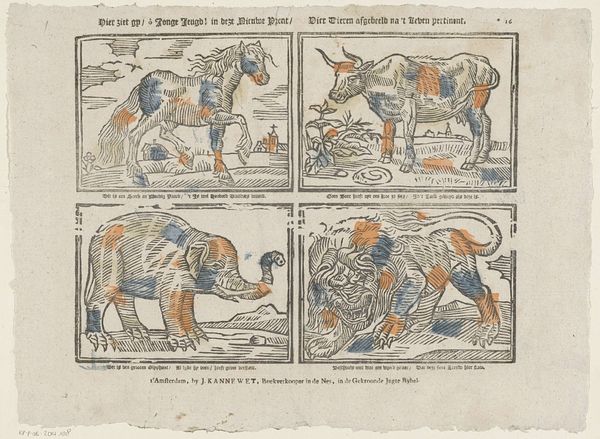
Hier zietge ô jeugt in vier getije, Het vlugge jaar ten einde glije 1725 - 1738
0:00
0:00
print, etching
#
narrative-art
#
dutch-golden-age
# print
#
etching
#
landscape
#
genre-painting
Dimensions: height 314 mm, width 391 mm
Copyright: Rijks Museum: Open Domain
Curator: This charming print, titled "Hier zietge ô jeugt in vier getije, Het vlugge jaar ten einde glije", was created sometime between 1725 and 1738 by weduwe Gijsbert de Groot. It’s an etching that seems to capture a year in the life, told through distinct seasonal vignettes. Editor: It feels very…contained. Each scene is bordered off, a little world unto itself. And the colors! Muted oranges and blues, almost like a faded memory. There's a naiveté that’s so endearing. It almost reads like a children’s rhyme gone pictorial. Curator: That's insightful. The division into quadrants certainly lends it a structured, almost calendar-like feel, hinting at the cyclical nature of the seasons and, indeed, of life itself. The Dutch Golden Age was known for its genre paintings, capturing everyday life, and this print seems to fall into that tradition, though with a folk art simplicity. The title supports your first take too: "Here behold youth in four times, The fleeting year to an end sliding". Editor: "Fleeting year…" even in translation it retains such a strong allegorical feeling. And the activities… farming, selling goods at market. It is less like capturing real moments but symbolizing our human cycle by representing different stages of labor, as little lessons for an easy reader or family member. The symbolism here really pops with those vibrant touches! And what's interesting to me is how it almost foreshadows modern comics in how it divides up and isolates distinct time. Curator: Absolutely. The symbolism is central. One notices immediately a cultural interest in landscape married to those themes; in each segment there's a harmony being shown between the architecture and the inhabitants... how do the images here create that, specifically, do you feel? Editor: Well, I mean, I notice in each the laboring aspect with figures working. From that perspective there isn't much. But for example, notice the second block where you have someone receiving charity: there's the building adjacent that implies the prosperity or the infrastructure to take care of someone. You would think there may be little moments that stand out but here, weduwe has found ways to insert those images into a shared fabric. Even a political claim in that way of living. The cultural message being carried is in line with the style—even if unintentional or secondary, the way those meanings reinforce one another really enhances the symbolism. Curator: A society stitched together. The perspective enriches the overall themes of continuity. Thank you, I find the fresh perspectives on the iconography here so inspiring; I know our listeners must appreciate them too. Editor: Thanks for sharing your insights; getting to really look made the experience quite special.
Comments
No comments
Be the first to comment and join the conversation on the ultimate creative platform.
